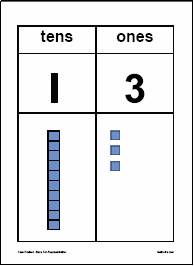They also wrote an entire book devoted to charting in the K-2 Classroom focusing on Math, Science, and Social Studies. Pretty awesome!
Happy charting!
Day
|
Objective
|
Exit
Ticket*
|
Whole
Group Mini Lesson
|
IP
|
Small
Group
|
1
|
SWBAT create a pictograph
|
For these lessons, I would just check their IP because this
would take them a long time to do as an exit ticket
|
Make a pictograph together where you have different cut
outs ready to go and you attach them to the graph on the board – something fun
like they pick their favorite animal and get to put on the graph (but only do
like 10 kids), this mini lesson should
be enough for your highest group to do the IP
|
Here
is an example worksheet, I would take out the questions in the middle, so all
they are doing is creating the pictograph
|
L: Make another class pictograph together on chart paper
(in the format of the IP) and really practice counting the number of each
item, have them do the beginning of the IP with you
|
M: Make another class pictograph together on chart paper
(in the format of the IP), have them start the IP with you
|
|||||
H: go over the work and make sure they did it correct and start
answering questions based on the graph.
|
|||||
2
|
SWBAT create a bar graph
|
Make a bar graph together of something fun, favorite ice
cream flavor? This mini lesson should be enough for the highest group to do
the IP
|
Here
is an example worksheet, again, I would take out the questions in the middle
so all they are doing is creating the bar graph
|
L: Make another class bar graph together on chart paper (in
the format of the IP) and really practice counting the number of each item, have
them do the beginning of the IP with you
|
|
M: Make another class bar graph together on chart paper (in
the format of the IP), have them start the IP with you
|
|||||
H: go over the work and make sure they did it correct and start
answering questions based on the graph.
|
|||||
3
|
SWBAT create a table graph
|
Look at a set (maybe unifix cubes or magnets) and create a
tally chart to sort what you have.
This mini lesson should be enough for the highest group to
do the IP
|
Here
is an example worksheet, I would take the questions off the bottom (but use
them in small group with the last group)
|
L: Make another class tally chart together on chart paper (in the format
of the IP) and really practice counting the number of each item, have them do
the beginning of the IP with you
|
|
M: Make another class tally chart together on chart paper
(in the format of the IP), have them start the IP with you
|
|||||
4
|
SWBAT interpret a pictograph
|
2) What
animal has the least?
3) How
many tigers and bears are there?
You will want to have the pictures on the exit ticket and
read the question to them.
Today’s exit ticket
might take closer to 10 minutes – so shorten rotations to around 7 minutes
|
Using the pictograph you made in Lesson 1, answer the following
questions together: Which has the least? Which has the most? Are there more
___ or ____? Are there less ___ or ___? How many ___ and _____?
|
Here is
an example worksheet that they can continue to practice pictographs. Because
most of them cannot read yet, just have them practice making the pictograph
and write “m” next to what has the most and “l” next to what has the least.
|
L: Show them a premade pictograph and use their write board
to answer questions similar to what you did during the whole group. Before
switching, have them do the beginning of the IP with you
|
M: Show them a premade pictograph and use their write board
to answer questions similar to what you did during the whole group. Before
switching, have them do the beginning of the IP with you
|
|||||
H: go over the work and make sure they did it correct and then
ask them questions based on the graph that they created for IP, or using the
same graph you used in groups 1 & 2.
|
|||||
5
|
SWBAT interpret a tally chart
|
These lessons will look exactly like lesson 4, just with
tally charts and bar graphs. For IP just have them practice making it and
focus on analyzing graphs during your whole group lesson, small groups, and
exit ticket.
Here are some resources to pull graphs:
http://www.kidscount1234.com/
(click on “graphing” on the left side)
|
|||
6
|
SWBAT interpret a bar graph
|
||||
7
|
Graphing Review
|
Whatever they need to practice or a fun graphing activity J
|
|||
 |
| Teaching with a Mountain View |
 |
| Surfin Through Second has some great activities |

 |
| Source: The Kinder Garden |